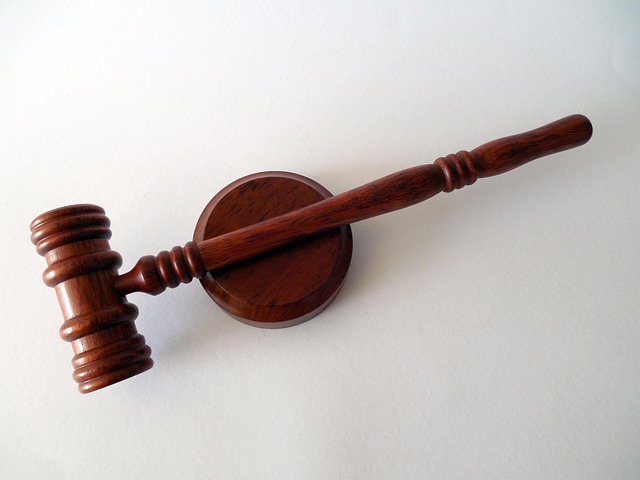RF Regulatory Agencies initiate investigations with initial assessments, reviewing docs, conducting site visits, and examining test reports to identify potential violations of RF and EMC standards. They provide guidance, ensuring compliance to avoid legal entanglements in litigation stages. Authorities oversee RF technology, conduct thorough inquiries, and can issue notices, leading to defense presentations and negotiations. Litigation stages are crucial for industry compliance and understanding rights/responsibilities, with evidence collection demanding meticulous attention for integrity and admissibility. Post-investigation, companies face consequences but also learn to enhance internal controls and risk management practices.
RF Regulatory Agency investigations are pivotal in ensuring wireless technology’s safety and performance. This comprehensive guide delves into the intricate process, from initial assessments and legal frameworks to litigious stages and evidence collection techniques. By exploring these key aspects, we aim to provide insights into understanding regulatory law and its impact on the industry. The article also examines post-investigation consequences and best practices for learning from incidents, highlighting critical steps in navigating RF compliance.
- Investigating RF Compliance: Initial Assessments and Procedures
- Legal Framework: Regulatory Authorities and Their Powers
- Litigious Stages: From Notice to Resolution
- Evidence Collection: Techniques and Best Practices
- Post-Investigation: Consequences and Learning from Incidents
Investigating RF Compliance: Initial Assessments and Procedures

When an RF (Radio Frequency) Regulatory Agency initiates an investigation into RF compliance, it typically begins with a thorough initial assessment. This involves scrutinizing the operations and products of the entity under scrutiny to determine any potential violations of relevant radio frequency and electromagnetic compatibility standards. The agency’s experts will examine technical documentation, conduct site visits, and review test reports to gain a comprehensive understanding of the situation.
This preliminary phase is crucial in identifying areas of non-compliance and setting the stage for further procedures. High-stakes cases often require an in-depth analysis, especially when dealing with corporate and individual clients. The agency’s goal is to avoid indictment by providing clear guidance on necessary adjustments while ensuring compliance with regulatory requirements, thereby preventing legal entanglements at the litigation stages.
Legal Framework: Regulatory Authorities and Their Powers

Regulatory authorities play a pivotal role in shaping the landscape of RF (Radio Frequency) technology and its applications. These agencies are tasked with ensuring compliance with the intricate web of regulations governing electromagnetic radiation, spectrum utilization, and device safety. Understanding the legal framework within which these authorities operate is crucial for businesses navigating the complex world of RF regulatory compliance.
The powers granted to such entities enable them to conduct investigations, issue fines, and even bring about changes in industry standards through legislation. When a potential violation is suspected, these regulators can launch in-depth inquiries, examining product designs, testing procedures, and manufacturer documentation. This process often involves multiple stages of litigation, culminating in binding decisions that can significantly impact companies’ operations, especially in high-stakes cases. Their expertise and unprecedented track record in handling such matters make them formidable adversaries or invaluable allies for businesses seeking to ensure their products meet the stringent requirements set forth by regulatory bodies worldwide.
Litigious Stages: From Notice to Resolution

The journey through regulatory agency investigations often culminates in litigation, a critical phase in understanding regulatory law. This process begins with a formal notice from the RF Regulatory Agency, outlining the allegations and violations. The respondent then has an opportunity to respond, presenting their defense and arguments. This exchange sets the stage for what could be lengthy and complex negotiations or, alternatively, a swift resolution.
The litigation stages are a crucial aspect of achieving extraordinary results in regulatory law. Across the country, philanthropic and political communities often find themselves engaged in these legal battles, ensuring that industry practices align with regulatory standards. Through this process, stakeholders learn to navigate the intricate web of rules and regulations, fostering a deeper understanding of their rights and responsibilities.
Evidence Collection: Techniques and Best Practices

Evidence collection is a critical aspect of RF Regulatory Agency investigations, especially during Understanding Regulatory Law and navigating the various Litigation Stages. It requires a meticulous approach to ensure the integrity and admissibility of evidence in court. Best practices include documenting every step of the collection process, maintaining a chain of custody for physical evidence, and utilizing advanced technologies to preserve digital data without altering it.
For RF investigations, this may involve employing specialized tools for data extraction, forensic analysis, and network monitoring. Maintaining detailed records and adhering to legal protocols is crucial to avoid issues during subsequent white collar defense strategies, ensuring that any gathered evidence can be presented effectively and achieving extraordinary results. Moreover, careful evidence handling is key to avoiding indictment by demonstrating a commitment to integrity and adherence to regulatory standards.
Post-Investigation: Consequences and Learning from Incidents

After an RF Regulatory Agency investigation concludes, the consequences for companies and individuals involved can be significant. Depending on the severity of the infractions, common outcomes include fines, license revocations, or even criminal prosecution through Understanding Regulatory Law Litigation Stages. These high-stakes cases often require robust white collar defense strategies to navigate complex legal territories.
The post-investigation phase also serves as a critical learning opportunity. Companies must analyze what led to the incident and implement stricter compliance measures to prevent future violations. By understanding the root causes, organizations can enhance their internal controls and risk management practices, ensuring they remain in compliance with regulatory requirements and avoid potential legal pitfalls.
RF regulatory agency investigations are multifaceted processes that require a deep understanding of both compliance procedures and legal frameworks. From initial assessments to evidence collection, each stage plays a crucial role in ensuring RF devices meet safety standards. By navigating the litigious stages effectively, stakeholders can mitigate consequences and learn from incidents, fostering continuous improvement within the industry. Understanding regulatory law, especially litigation stages, is essential for maintaining compliance and averting potential issues, thereby enhancing the overall reliability of Radio Frequency (RF) technologies.






